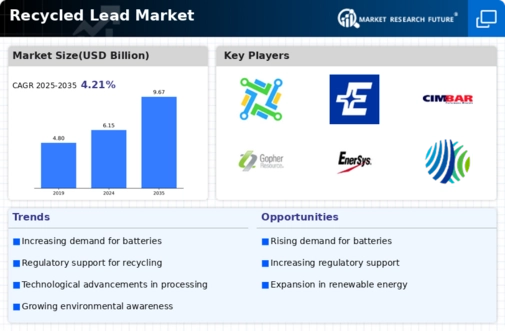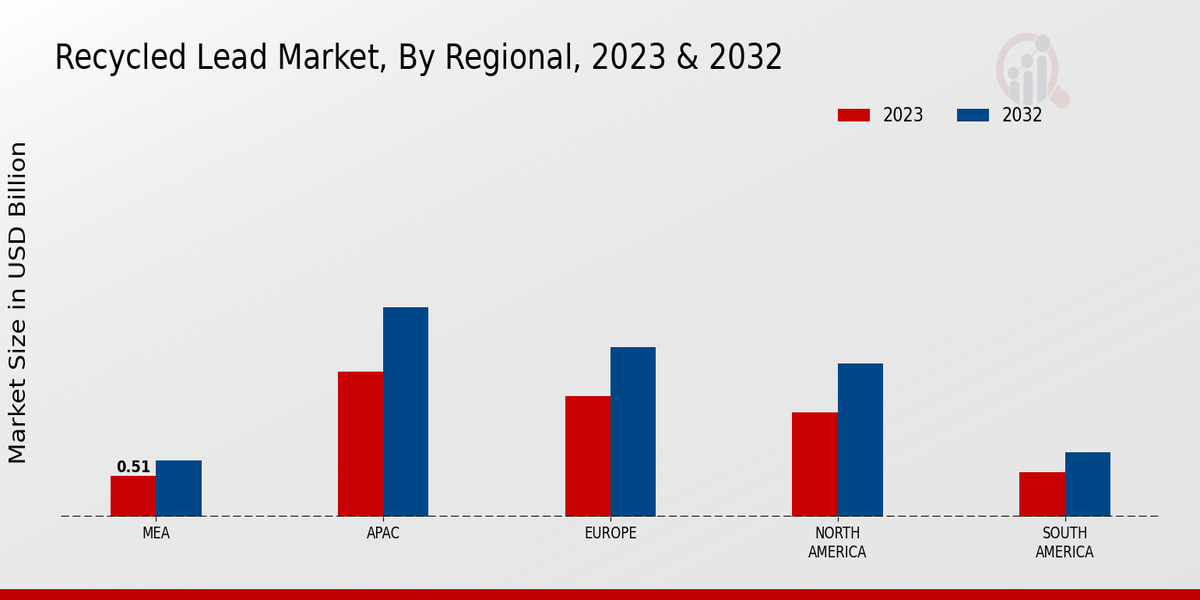Market Growth Projections
Regulatory Support and Incentives
Regulatory frameworks and incentives play a crucial role in shaping the Global Recycled Lead Market Industry. Many governments worldwide are implementing stringent regulations aimed at reducing lead pollution and promoting recycling initiatives. For instance, policies that mandate the use of recycled materials in manufacturing processes encourage companies to adopt recycled lead. This regulatory support is expected to propel the market, with projections indicating a growth trajectory that could see the industry reach 9.67 USD Billion by 2035. Such measures not only foster a circular economy but also enhance the overall sustainability of lead production.
Growing Demand for Sustainable Practices
The increasing global emphasis on sustainability drives the Global Recycled Lead Market Industry. Governments and industries are prioritizing eco-friendly practices, leading to a surge in demand for recycled materials. This trend is particularly evident in the battery manufacturing sector, where recycled lead is increasingly utilized to produce new batteries. As a result, the market is projected to reach 6.15 USD Billion in 2024, reflecting a growing recognition of the environmental benefits associated with recycled lead. The shift towards sustainable practices not only reduces waste but also conserves natural resources, positioning recycled lead as a viable alternative in various applications.
Market Diversification and New Applications
The Global Recycled Lead Market Industry is witnessing diversification as new applications for recycled lead emerge. Beyond traditional uses in batteries, recycled lead is increasingly utilized in construction, radiation shielding, and other industrial applications. This diversification not only broadens the market's scope but also enhances its resilience against fluctuations in specific sectors. As industries recognize the benefits of using recycled materials, the demand for recycled lead is likely to grow, contributing to the overall market expansion. This trend indicates a potential for sustained growth, aligning with the broader movement towards resource efficiency and sustainability.
Technological Advancements in Recycling Processes
Technological innovations in recycling processes significantly enhance the efficiency and effectiveness of lead recovery, thereby impacting the Global Recycled Lead Market Industry. Advanced techniques, such as pyrometallurgical and hydrometallurgical methods, improve lead extraction rates and reduce energy consumption. These advancements not only lower production costs but also increase the quality of recycled lead, making it more competitive against virgin lead. As the industry evolves, these technologies are likely to attract investment and drive market growth, contributing to a projected compound annual growth rate of 4.2% from 2025 to 2035.
Rising Battery Production and Electric Vehicle Demand
The surge in battery production, particularly for electric vehicles, significantly influences the Global Recycled Lead Market Industry. As the automotive sector shifts towards electrification, the demand for lead-acid batteries remains robust, necessitating a reliable supply of recycled lead. This trend is further amplified by the growing consumer preference for sustainable products, which encourages manufacturers to source recycled materials. Consequently, the market is poised for growth, with estimates suggesting a potential increase in market value to 9.67 USD Billion by 2035, driven by the intersection of battery technology and environmental consciousness.








